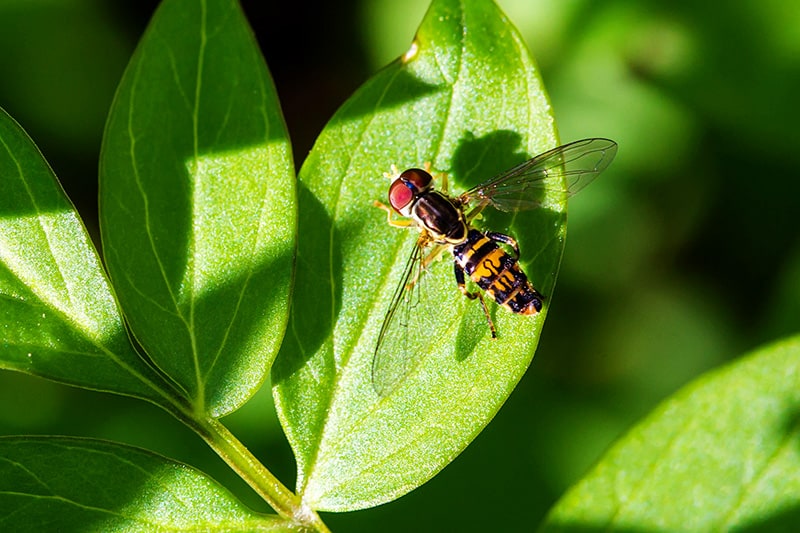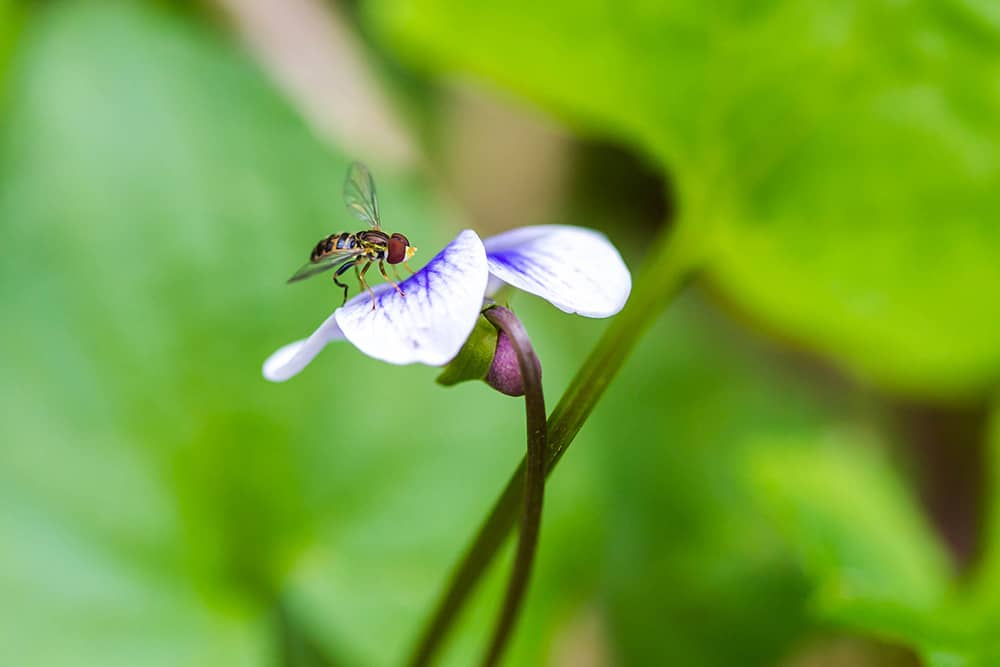#NatureZen: Calligrapher Flies
words and photos by Melissa McMasters
Today we’re shining a spotlight on tiny creatures that are abundant in the Old Forest: beautiful pollinators called calligrapher flies. Named for the fine black etchings on their abdomens, these flies are mimics of stinging insects like bees and wasps, but they don’t have stingers themselves. They do, however, sometimes make buzzing sounds!
The genus Toxomerus, which all these flies belong to, has more than 130 described species in North and South America. Toxomerus flies are part of the Syrphidae family, so they’re sometimes called syrphids, sometimes called flower flies (because they’re so often seen pollinating flowers), and sometimes called hover flies (due to their behavior when traveling between flowers). Flies are notoriously hard to identify down to the species level, but the calligrapher flies’ ornate patterns are so unique that they’re relatively easy to distinguish.
We’ve spotted four species of calligrapher fly in the park over the years. The first is the thin-lined calligrapher, Toxomerus boscii, whose abdomen has two thin lines running down the center. Its back leg also has a black ring around it, as shown here.
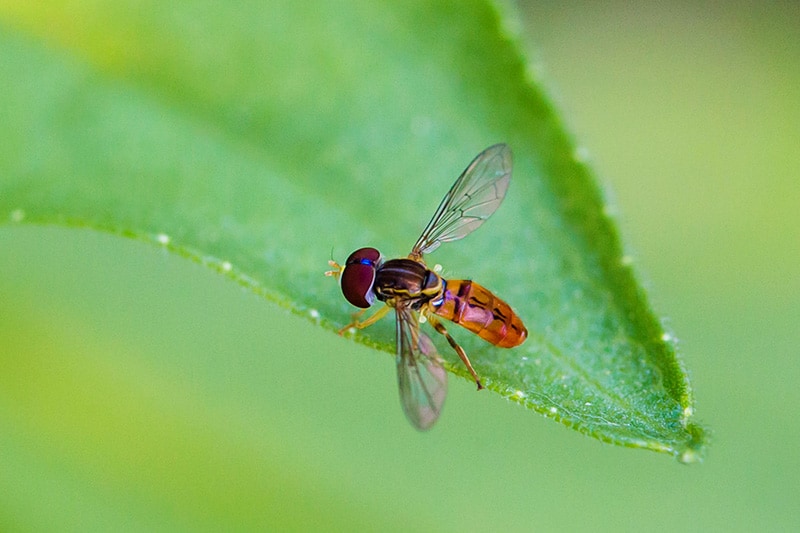
Next is Toxomerus politus, known as the maize calligrapher because it prefers the pollen of corn plants. It also feeds on the pollen of grasses. This fly’s black and yellow abdomen really might remind you of a bee, so how do you tell the difference? A fly has much smaller antennae than a bee, is less hairy, and has two wings instead of four.
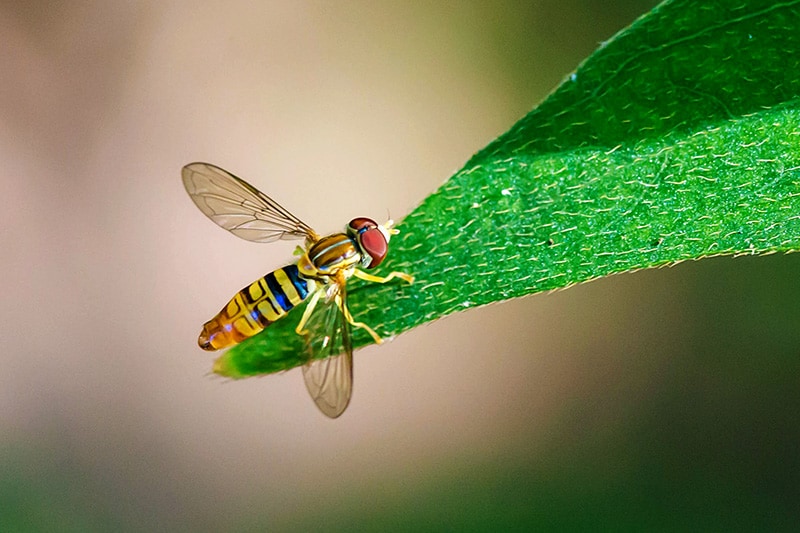
The margined calligrapher, Toxomerus marginatus, is the most common calligrapher fly in the eastern United States. They’re easy to ID because their markings form a closed margin around their abdomens.
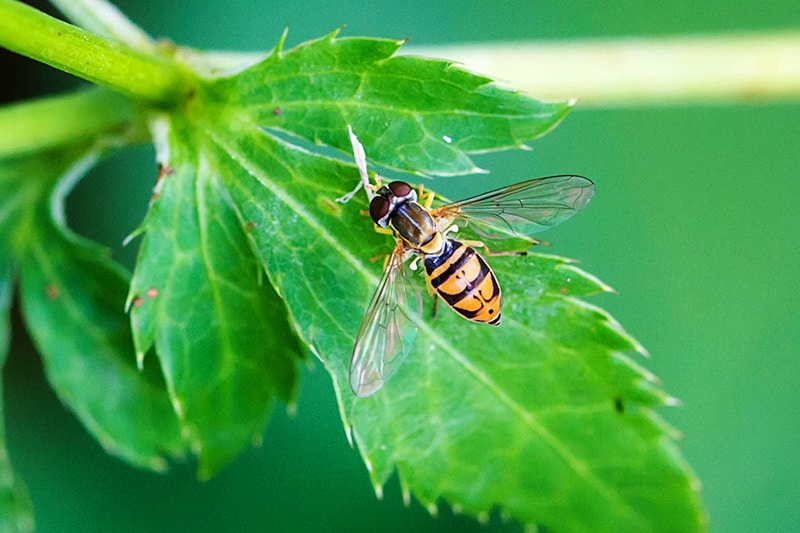
Males of this species are holoptic, meaning their eyes connect to each other. (You can see this in the photo below.) Translated from the Greek, “holoptic” literally means “whole-eyed.” That’s a good way to tell that the fly in the photo above is a female–her eyes are clearly separated.
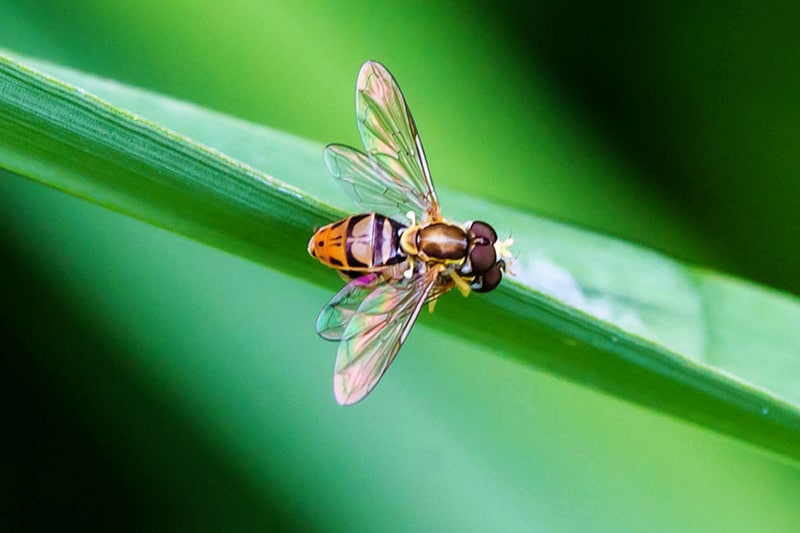
Sometimes you’ll run across a calligrapher with a much darker abdomen. This means that when the fly was in its pupal stage, it was cold out! Exposure to heat is what gives the flies their golden color, and when it’s absent, they can be quite dark.

Finally, we come to the Eastern calligrapher, Toxomerus geminatus, which has the most intricate pattern of the four species found in the park. The black bands on its abdomen alternate between reaching all the way to the edge, like the margined calligrapher, and indenting in further. In the center are goblet-shaped markings. These flies are a gardener’s friend; not only are they pollinators, but their larvae eat aphids and mites!
